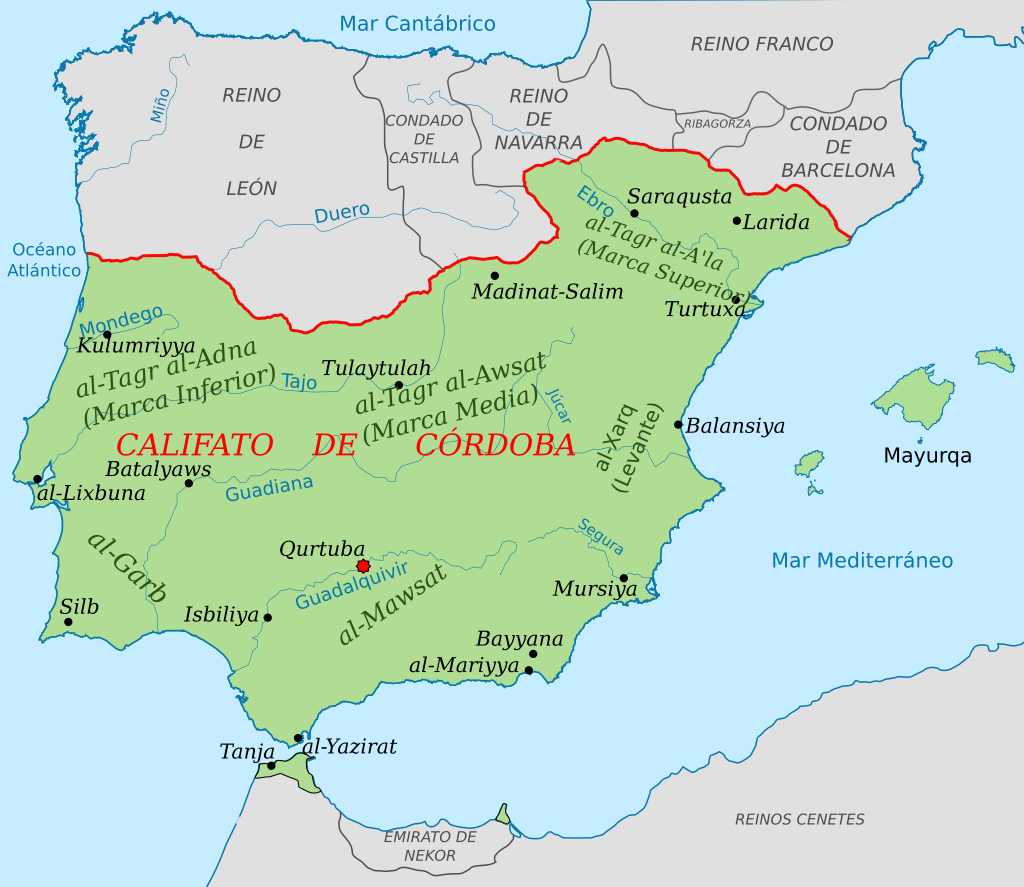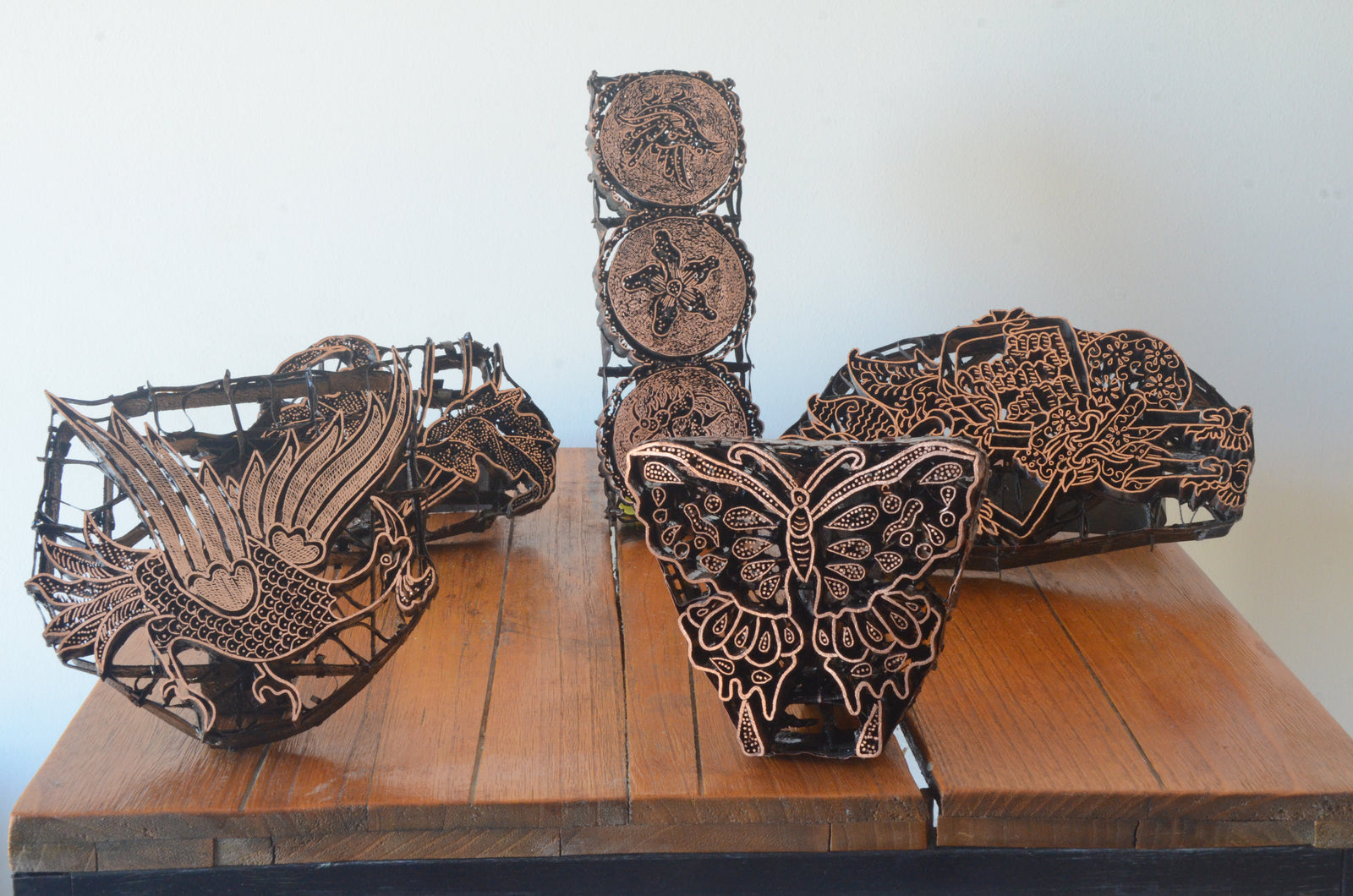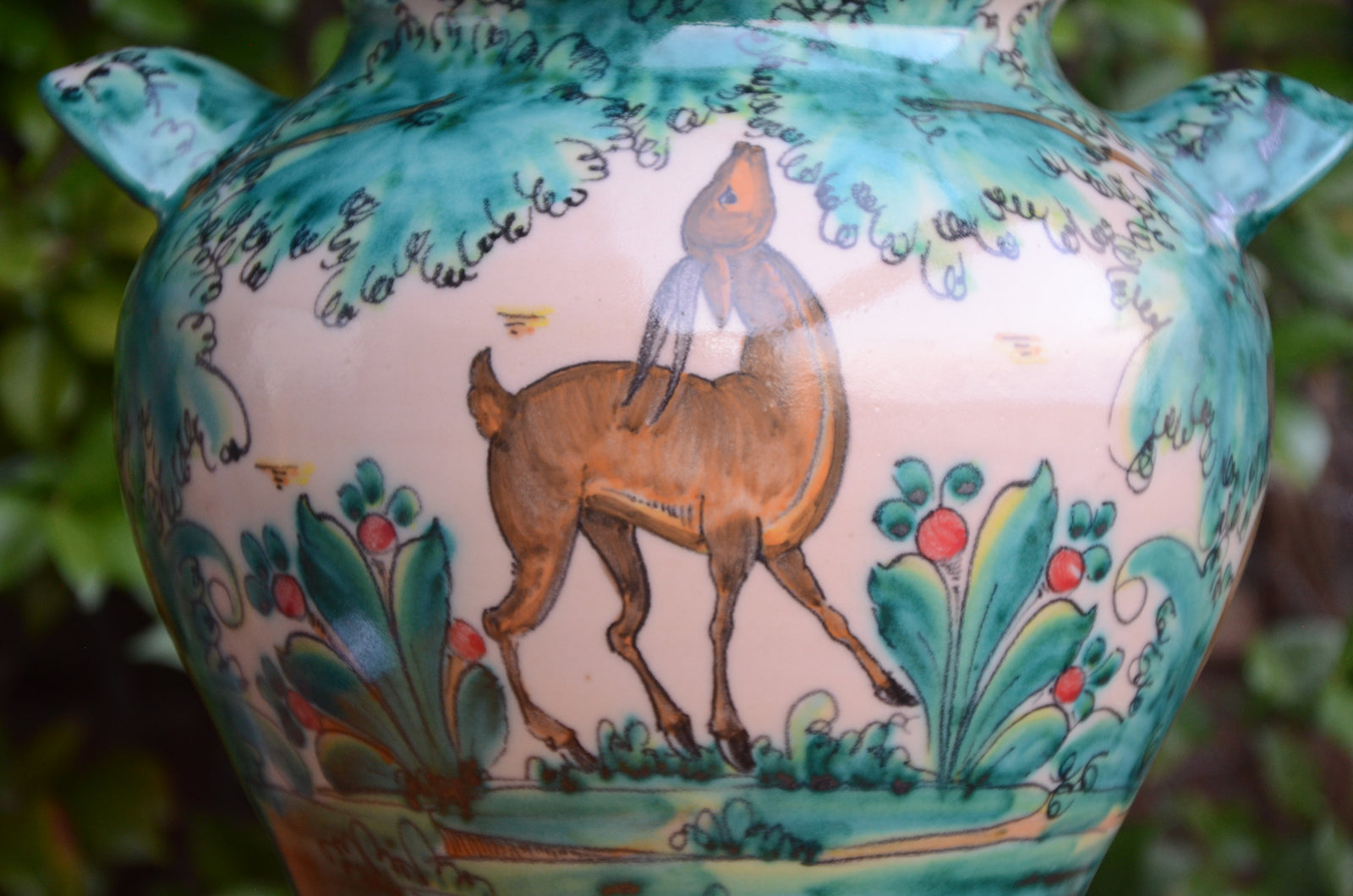
THE CÓRDOBA CALIPHATE
In 711 a.c. muslims crossed the Gibraltar strait into the Iberian Peninsula, and from VIII to XV centuries, a great part of the Iberian Peninsula (the current Spain and Portugal) and even part of south of current France was ruled by muslims. During this time, a rich culture in all they forms were developed, including Caliphate Ceramics and Nazarí Ceramics.
Itwas not until the arrival of Abderraman I that Al-Andalus, the name as the conquered Iberian peninsula was known in the Caliphate of Damascus, became an independent emirate of Damascus and gave way to one of the most brilliant times of our time. In history, he was the first Umayyad emir of Al-Andalus, the initiator of a dynasty and a political regime that would become the famous Umayyad Al-Andalus (first Emirate and later Caliphate), one of the most important states of the late medieval West and that would last for almost three centuries, until the official fall of the caliphate in 1031.

Abderramán was a prince of the dynasty of the Umayyad caliphs of Damascus. As is well known, he managed to save his life in the massacre of Abú Futrus suffered by his family in 750 at the hands of the enemy faction of the Abbasids. This fact pushed the change of dynasty in the Caliphate of Damascus.
Abderramán fled with some followers to the south and managed to reach Africa to its western end, to Ceuta, where he was welcomed by the Nafta tribe from which his mother was originally.
Abderramán understood that he could seek support in the Peninsula from Syrians loyal to his family, descendants of those who had intervened in the conquest four decades earlier. In this way, Abderramán, embarked to reach the coasts of Granada (Almuñécar) in the year 755, with the intention of looking for new followers who would strengthen their chances of reaching the power that they had not achieved in Africa. In those years Al-Andalus was a territory weakened by continuous ethnic tribal confrontations.
Abderramán assembled an army of loyalists made up of Syrians, Yemenis and Berbers, and defeated, after a short war, Emir Yusuf, political representative of Damascus. This is how Abderramán entered Córdoba in 756 and became the first independent emir of Al-Andalus.
Two centuries later in 912 Abderraman III acceded to the throne, finding himself in an impoverished state and on the brink of dissolution. His first twenty years of reign were dedicated to battling the rebel territories, emerging victorious from almost all of them, thus managing to recover lost tributes and strengthen his army.
After subduing most of the rebels, on Friday, January 16, 929, Abderraman III, like his ancestors, proclaimed himself Khalifa Rasul-Allah (successor of the envoy of God, Caliph) and amir al-muminin ("prince Believers'), presuming to have more legitimate rights than the Fatimid Caliph of Kairuan (Tunisia) and the Abbasid Caliph of Baghdad to assume that title, as a descendant of the Umayyads of Damascus. Abderramán's goals in proclaiming himself caliph included both opposition to Fatimid authority and the recovery of Umayyad prestige or the implementation of a great political and cultural reform. Two and a half months earlier, as a preliminary step, the mint had been founded to produce gold dinars. Until then, only silver coins had been minted on the peninsula and the dinars came from the Galabi emirate of North Africa. The issuance of gold coins marked the end of a long Umayyad currency crisis, reflecting the policy and fiscal policy it had been engulfed the emirate since the end of the previous century.
The new period inaugurated by Abderramán with the proclamation of the Caliphate of Cordoba resulted in the heyday of Islam in the Iberian Peninsula, both in terms of political power and economic prosperity, cultural and artistic development or scientific knowledge. the most powerful policy that had existed on the Iberian Peninsula since the time of Rome: the Umayyad Caliphate of Al-Andalus.
Abderramán III not only made Córdoba the nerve center of a new Muslim empire in the West, but also made it the main city of Western Europe, rivaling for a century with Baghdad and Constantinople, the capitals of the Abbasid Caliphate and the Byzantine Empire, respectively, in power, prestige, splendor and culture. The Umayyad Caliph was also a great promoter of culture: he endowed Córdoba with a university, a medical school, and another school for translators from Greek and Hebrew to Arabic. He had the Mosque of Córdoba expand, and ordered the construction of the extraordinary palatial city of Madinat Al-Zahara, of which he made his residence until his death in 961.
The caliphate officially lasted until the year 1031 when it was abolished, leading to the fragmentation of the Umayyad state into a multitude of kingdoms known as taifa.
Comments will be approved before showing up.

